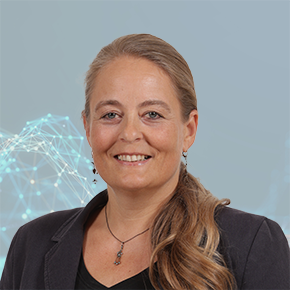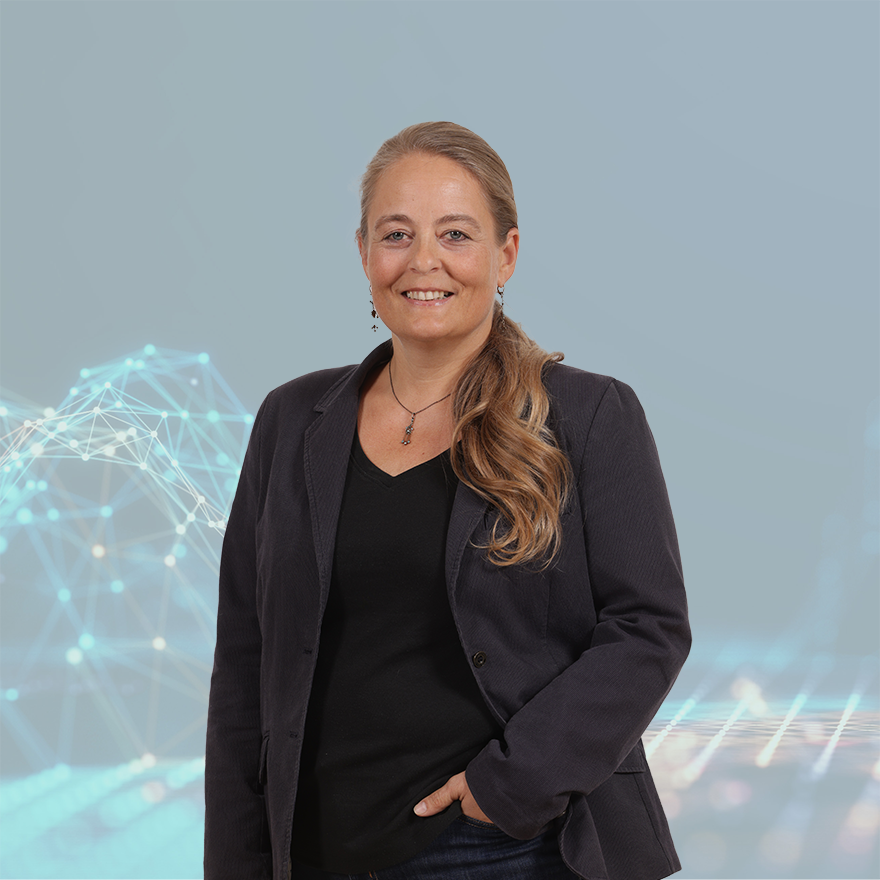Ten partner institutions from Europe are participating in the Real4Reg project, which is being coordinated by Dr. Silja Wortberg for the BfArM. Large data volumes from healthcare and artificial intelligence aim to improve regulatory processes.
Every day, a great quantity of data is created in healthcare: such as accounting data from health insurers, data from registers (for example the individual Federal states‘ cancer registers) or even data from electronic health files. Known as Real-World Data (RWD), these also offer a great opportunity for regulatory decision-making. Randomised Controlled Trials (RCT) are accepted as the gold standard to prove the efficacy of a new drug and to approve the product. But these trials also have their downsides, as the trial conditions do not reflect the real world. Trial participants are generally young, healthy men, which makes it difficult to transfer the results to other patient groups, such as older people, women of all ages and children. Furthermore, for ethical reasons, it is difficult to carry out clinical trials for population groups such as pregnant women or children. It is also very difficult to reach the necessary large case numbers for RCTs for people with Rare Diseases.
Improving regulatory processes
This is why RWD is a great opportunity, as it represents the reality of the everyday treatment of the population. At the beginning of 2023, the research project Real4Reg was launched, initiated and coordinated by the research department of the BfArM and promoted by the European Union (Horizons Europe Programme). The aim of the project is to improve regulatory processes in the authorities using RWD. This means that regulatory and Health Technology Assessment (HTA) bodies are provided with optimised methods for the effective exploitation of RWD for the assessment of medicines. “In this way, we expand the horizons of regulators over and above the clinical trials,” explains Silja Wortberg, talking about the project. To do this, accounting data from health insurers and data from national registers should be used. Another aim of the project is to further develop methods for the suitable application of artificial intelligence (AI) on RWD sources in the context of the regulation and Health Technology Assessment (HTA). To be able to tackle the huge quantity of data, artificial intelligence is to be used for the analysis and evaluation, in order to identify patterns and prediction models. In addition to classic statistical models and propensity score algorithms, a wide range of AI algorithms and methods are therefore also applied.
The first challenges
In addition to the BfArM, another nine organisations from six European countries are participating as coordinators. These include HTA bodies, academic institutions and patient organisations. At the beginning of the project, Wortberg reports: “Our first challenge is to have common standards so that the data from the various countries can actually be used as a data set in the first place.” Coordinated by the BfArM, the data from the European partner countries is to be converted into a common data model so that it can be used for joint assessments. “This data also forms a very important basis for further cooperation as part of the European Health Data Space (EHDS) or DARWIN EU,” explains Wortberg.
A huge data foundation
In Germany, the project plans to use data, among others, from the Health Data Lab. This is currently being set up at the BfArM. It receives the data from all of the around 73 million people with statutory health insurance in a pseudonymised form, which is collected and quality-assured by the German National Association of Health Insurance Funds (GKV-SV), and can then provide this on request in an anonymised or pseudonymised form for the purposes of research and improving healthcare provision. To guarantee the protection of the data, the Real4Reg project does not exchange data between the organisations originating from different countries.
Ultimately, the efficacy and safety of medicines should be increased.
Dr. Silja Wortberg, Project Coordinator Real4Reg

Project topics
The Real4Reg project kicked off working with four relevant application examples from regulatory practice along the product life cycle of medicines: Amyotrophic Lateral Sclerosis (ALS), breast cancer, SGLT2 inhibitors and fluoroquinolones. Using the application examples, studies are conducted into the use of RWD to describe trial populations, the use of historic controls/digital twins, the analysis of RWD for evaluating drug safety as well as for addressing efficacy and drug repurposing.
In addition to the application of classic evaluation methods, project partners the Fraunhofer Institute for Algorithms and Scientific Calculations (SCAI) and CSC Finland develop AI algorithms and methods, the benefits of which can be used for regulatory decisions in these topic areas. If this works, the scripts can in future be transferred to other topic areas and application examples.
The project continues to work on strategies concerning how these new approaches can be introduced into the regulatory and HTA authorities in Europe. Wortberg explains: “The structure and approach of our project targets the implementation of effective data exploitation from ’the real world‘ outside of clinical trials to facilitate decision-making in the context of regulation and HTA evaluation.” For this purpose, a survey is carried out as part of the project, which queries the requirements and wishes of the relevant European stakeholders, so that the results of the project can be converted into training measures which are right on target.
The participants give up-to-date information on the current status of the project on the real4reg.eu website. The first results are expected to be published in 2024, while the project should run until the end of 2026. In addition to training measures for the application of RWD in a regulatory context, the project results are relevant for existing and arising guidelines for regulatory bodies in healthcare and HTA bodies across Europe.
Dr. Silja Wortberg
Studied medicine, psychology and sociology. 2006 to 2012 worked as research assistant for the Federal Centre for Health Education (BZgA) in the department of infection protection; scientific officer at the German institute for addiction and prevention research (DISuP) as well as at the Cologne and Witten/Herdecke universities, with a doctorate in health sciences. Since the end of 2021, research coordinator in Department 5 of the BfArM.











